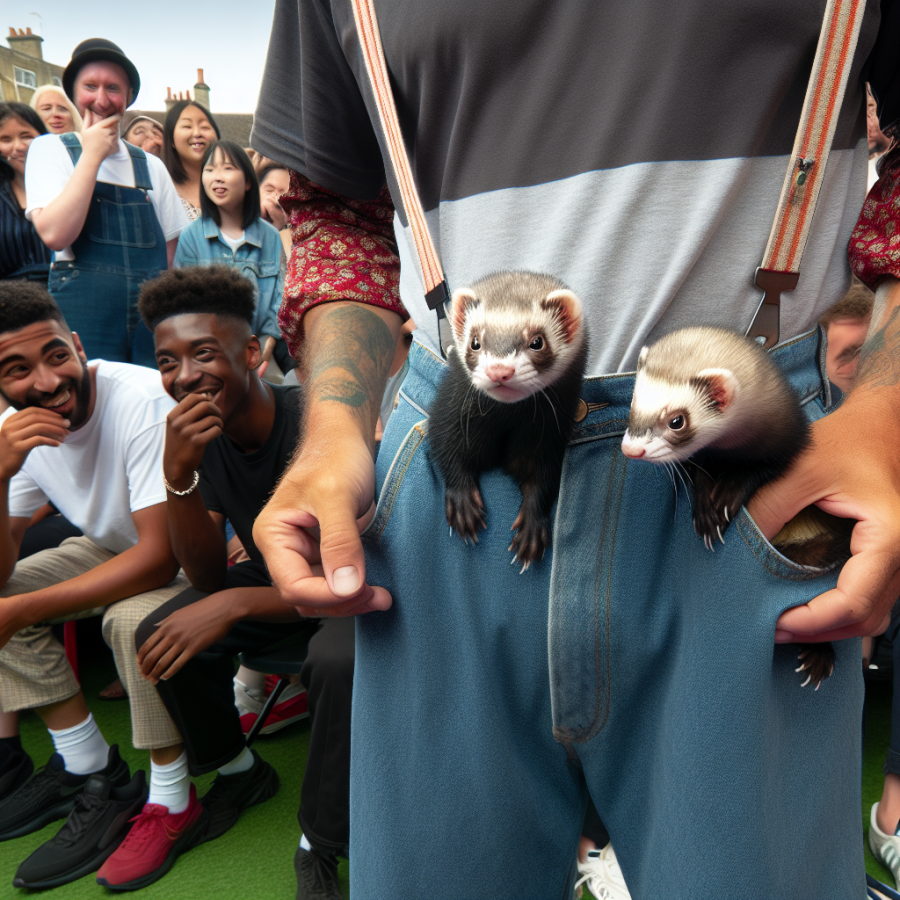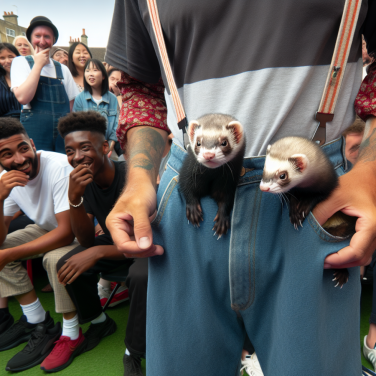The Modern Practice and Cultural Impact of Ferret Legging
Ferret legging, an eccentric and distinctive sport that originated in the rural pubs of the United Kingdom, has managed to gain a peculiar spot in the realm of competitive pastimes. Though its popularity peaked in the 1970s and 80s, the sport has experienced something of a cult revival in recent years, intriguing audiences with its oddity and the sheer eccentricity of its participants.
At its core, the modern practice of ferret legging is much the same as it has always been. Competitors place two live ferrets in their trousers, which are firmly secured at the ankles and waist to prevent any escapees. The objective is to endure the discomfort for as long as possible. True practitioners of the sport pride themselves on their stoicism, often standing stone-faced while the ferrets nonchalantly navigate the confines of their garments.
Training for ferret legging involves not only mental preparation but also entails building a tolerance to the nips and movement of the ferrets. Seasoned veterans are known to develop techniques that allow them to adjust to the wriggling creatures, some even claiming to enter a meditative state to endure the pain. Despite its rough and tumble reputation, the modern sport has enforced rules to ensure animal welfare, including the prohibition of sedated or otherwise incapacitated ferrets and the requirement for the animals to have a full set of teeth, making it a true test of endurance rather than cruelty.
However, it is the cultural impact of ferret legging that really intrigues sociologists and anthropologists alike. As a sport, it offers a glimpse into human-animal interaction within a competitive context rarely seen in modern athletics. It touches on concepts of machismo, rural identity, and the inheritance of unusual traditions. Often regarded with a mix of disbelief and humor, ferret legging serves as a reminder of the quirky diversions that form the social fabric of local communities. The sport's continuation is also a testament to the value that such communities place on maintaining traditions, even as the world around them changes at an ever-accelerating pace.
Festivals and events centering on ferret legging have become focal points for community gatherings, often supporting local charities or causes. These spectacles draw not just locals but also the curious and the adventurous from far and wide, keen on witnessing or participating in what is, for many, a once-in-a-lifetime experience.
Read also:
Soaring Heights: The Thrills of Dirt Jumping Mastery
Exploring the Origins and Rules of Ferret Legging
Ferret legging, an arcane sport that has bewildered many, is believed to have its origins in the rural pockets of England. Historically, it's said to have been a test of endurance amongst coal miners who, during their spare time, would boast about their virility and strength by undertaking this peculiar challenge. The intent was to demonstrate stoicism and the ability to withstand pain, characteristics highly valued in their tough, working-class communities.
To understand ferret legging, one must familiarize themselves with the rules that govern this eccentric contest. The fundamental rule is deceptively simple: participants, known as ferret-leggers, place a pair of live ferrets inside their trousers, which are tied shut at the ankles and securely belted at the waist to prevent the slender, curious animals from escaping. The ferrets must be fully-toothed and not sedated, as the true spirit of the sport is to gauge a man's endurance to the nipping and squirming of the ferrets within their pants.
Once the contest begins, competitors cannot be drunk or drugged, as this would dull the sensations and potentially give an unfair edge by numbing pain. The challenge is to stand stoically, devoid of any semblance of discomfort. Bouts of squirming, shuffling, or any indications of internal agony must be cleverly masked to avoid the ridicule of the onlooking crowd.
The sporting event has no established uniform; however, participants traditionally wear white trousers, likely to make it easier for spectators to spot any blood from ferret bites. These pants are also typically loose-fitting to give the ferrets ample room to move—at least within the confines of the fabric prison. While it may seem like baggy trousers would provide a competitive advantage, they also potentially allow the sharp-toothed animals more momentum for their bites, rendering the contest no less challenging.
Duration is the main metric of success in ferret legging. The winner is the individual who endures the longest with the ferrets in their trousers. Records are held with prodigious pride. The world record, which stood for some years, was set at an astonishing five hours and thirty minutes. It's a testament to the sheer will and pain tolerance of the individual who set such a benchmark.
During the duration of the sport's heyday, referees would oversee the events to ensure that participants adhered to the rules.




